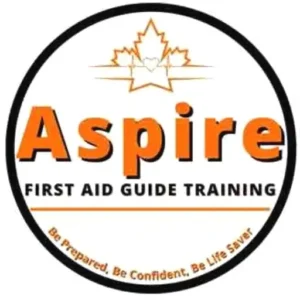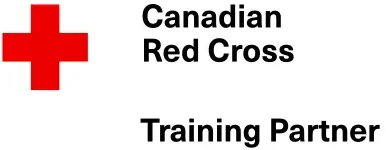Quick answer: In Ontario healthcare, BLS (Basic Life Support) is the standard certification employers ask for in clinical roles (nurses, physicians, RTs, paramedics, dental teams, students on placement). CPR (often “CPR Level C” with AED) is typically acceptable for non-clinical roles and for meeting general workplace first-aid compliance under WSIB Regulation 1101. CPR Heart & StrokeCanadian Red CrossWSIB
TL;DR (who needs what)
- Hospitals, clinics, long-term care & student placements: Current BLS (healthcare provider level), commonly from Heart & Stroke or Canadian Red Cross. Many Ontario nursing programs and clinical placement partners explicitly require BLS before you can step on the floor. Mohawk CollegeFaculty of Health Sciences
- Dental practices (Ontario): Dentists and clinical staff must be trained to deliver BLS; maintaining current BLS is strongly recommended and mandatory for those providing sedation. RCDSO+1
- General workplaces (non-healthcare): Standard First Aid + CPR (often Level C) with AED to meet WSIB Regulation 1101—BLS usually not required. WSIB
BLS vs CPR: what’s the difference?
| Topic | BLS (Basic Life Support) | CPR (often Level C) with AED |
|---|---|---|
| Designed for | Healthcare professionals & first responders | General public & non-clinical workplaces |
| Skills focus | High-performance, team-based resuscitation, bag-mask ventilation, 1- & 2-rescuer adult/child/infant CPR, choking relief, AED | Single-rescuer adult/child/infant CPR, choking relief, AED basics |
| Typical duration | ~4 hours standalone (longer with oxygen/airway modules) | Varies by provider; commonly included within Standard First Aid |
| Certificate validity (Canada) | 1 year | Often 3 years (organization-dependent); many employers recert sooner |
| Common brands in Ontario | Heart & Stroke (H&S) BLS, Canadian Red Cross BLS | Red Cross CPR A/C, St. John Ambulance CPR C, etc. |
Sources: Heart & Stroke Canada BLS; Canadian Red Cross BLS & recert policy; provider course pages. CPR Heart & StrokeCanadian Red CrossCanadian Red Cross
What Ontario healthcare employers ask for in 2025
Hospitals, outpatient clinics, home & community care
Ontario postings and partner clinical programs consistently expect a current BLS (healthcare provider level)certification. Nursing programs (which mirror hospital placement requirements) specify Heart & Stroke BLS (or equivalent) as a pre-placement must-have. Expect annual renewal. Mohawk CollegeFaculty of Health Sciences
Dental practices
The RCDSO states dentists and clinical staff must be able to perform BLS; maintaining current BLS is strongly recommended, and sedation providers must have BLS/CPR (Health Care Practitioner) or equivalent and keep it current. RCDSO+2RCDSO+2
Paramedics
Ontario paramedic care is governed by the Basic Life Support Patient Care Standards (MOH). Training and practice assume BLS-level competencies as the minimum mandatory level of patient care. Ontario Files
General workplaces (non-clinical)
To comply with WSIB Regulation 1101, Ontario employers must have trained first aiders on every shift and appropriate kits. This is typically met with Standard First Aid + CPR (Level C) with AED—not BLS. WSIB
How long is your card valid?
- BLS (Canada): 1-year certification cycle is the norm (H&S recommends annual renewal; Red Cross states BLS is valid for one year). Many hospitals and schools require you to be current on placement start and at all times while practicing. CPR Heart & StrokeCanadian Red Cross
- CPR (non-BLS): Often 3 years with Red Cross (employers may set shorter intervals). Canadian Red Cross
Which one should you take?
- Clinical staff (RN, RPN, NP, MD, RT, EMS, PT/OT/SLP in hospitals/clinics, dental teams): Take BLS. Check if your employer or school prefers Heart & Stroke specifically. Mohawk College
- Students heading into clinical placements: Your school or placement partner will virtually always require BLSbefore placement. Don’t risk delays—book BLS early. Faculty of Health Sciences
- Admin/support roles & non-clinical workplaces: CPR Level C with AED (often within Standard First Aid) satisfies WSIB rules. WSIB
2025 Ontario nuance to know
- “CPR-HCP” vs “BLS”: If you still see “CPR-HCP,” that’s the older label; providers replaced it with BLS several years ago for healthcare audiences. Employers and schools now list BLS. SOS First Aid
- Branding matters sometimes: Some postings and advanced courses (ACLS/PALS) explicitly require Heart & Stroke BLS; others accept Red Cross BLS. Always check the fine print before you book. Sunnybrook
FAQs
Is BLS harder than CPR Level C?
BLS is deeper and faster-paced, emphasizing team-based resuscitation (bag-mask ventilation, roles, timing) on top of high-quality compressions and AED use. CPR Level C is built for lay responders. Canadian Red Cross
How often should I renew BLS?
Plan for every 12 months in Canada; many employers/schools require you to stay current year-round. CPR Heart & StrokeCanadian Red Cross
Does WSIB require BLS?
No. WSIB Regulation 1101 requires trained first aiders and CPR/AED coverage—BLS is not stipulated for general workplaces. WSIB
I work in a dental office—do I need BLS or CPR C?
Ontario’s dental regulator expects clinical staff to be trained to BLS level; current BLS is strongly recommended and required for sedation providers. RCDSO+1
I’m an Ontario nursing student starting placement—what card do I need?
Your school and clinical partners will almost certainly require BLS (healthcare provider level)—often named Heart & Stroke BLS—before your first shift. Mohawk CollegeFaculty of Health Sciences
Book smart: what to bring & how to list it
- Bring: Government ID, your previous BLS card (if renewing), and be on time for the in-person skills testing. Canadian Red Cross
- Resume tip: “Basic Life Support (BLS) – Heart & Stroke, valid to May 2026” (or Red Cross). Put it under Certifications, add ACLS/PALS if applicable.
Ready to get certified?
We run BLS (Heart & Stroke / Red Cross) and Standard First Aid + CPR Level C classes across Ontario with weekday, evening, and weekend options. If you’re unsure which course your employer or school accepts, we’ll check for you and place you in the right session.
Popular picks (2025):
- BLS Provider (Healthcare) – 4 hours; valid 1 year. Canadian Red Cross
- Standard First Aid + CPR Level C/AED – meets WSIB Reg. 1101; valid up to 3 years per provider policy. WSIBCanadian Red Cross
Book now: Tell us your role (e.g., RN student at Mohawk, DA in a sedation clinic, LTC PSW) and your start date—we’ll match the right certificate and get you a seat this week.
Meta (for SEO)
- Title: BLS vs CPR: What Ontario Healthcare Employers Require (2025)
- Meta description: Not sure if you need BLS or CPR in Ontario? Here’s the 2025 guide for hospitals, clinics, dental, placements and WSIB rules—plus renewal timelines and how to choose the right course.
- Target keywords: BLS vs CPR Ontario, BLS Heart & Stroke Ontario, Red Cross BLS Ontario, CPR Level C Ontario, WSIB Regulation 1101 first aid, healthcare BLS requirement Ontario, nursing student BLS Ontario
References (key sources)
- Heart & Stroke Canada – BLS overview & renewal guidance (annual cycle recommended). CPR Heart & Stroke+1
- Canadian Red Cross – BLS course & certification validity (BLS = 1 year; most other certs = 3 years). Canadian Red CrossCanadian Red Cross
- WSIB Regulation 1101 (First Aid Requirements) – employer first-aid/CPR obligations in Ontario (non-healthcare). WSIB
- Ontario Tech & Mohawk Nursing – BLS required for clinical placement. Faculty of Health SciencesMohawk College
- RCDSO (Ontario dentistry) – BLS competence for clinical teams; sedation providers must maintain current BLS/CPR-HCP or equivalent.

